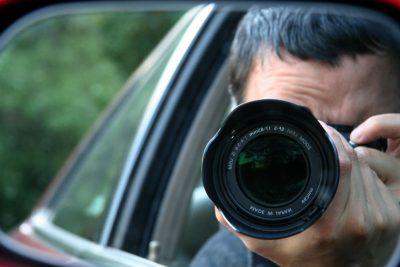Photography can be a combination of art and science. There is creativity required in taking beautiful shots and framing the subject to make the most of everything available, but at the same time, there are some hard and fast principles to follow. Photography isn’t just about pointing and shooting, but also composition, balance, and blending.

Success in photography is something that requires hard work and skill. It is something that must be cultivated and mastered. If you’re looking to help yourself get into the field of photography and set yourself up as a success, you need to understand a few principles. So let us give you some excellent advice to get that success lined up in your viewfinder.
Learn What Your Camera Can Do
Master your camera. Getting a good DSLR camera is just the first step. You should do more than just use the default settings, but instead, learn what each one does or can do. For instance, longer exposures help capture light for night shots. Shutter speeds can be useful in capturing motion and movement, especially at high speeds.
By knowing what your camera’s features are, you better understand what you can do with it. If you don’t know how to use your own tools, you will never find success as a photographer.
Charge Properly
Equipment isn’t cheap. A Soonwell flexible LED light can cost money, as would a reflector. Lenses can often rack up prices higher than the camera itself. All of these things are worth the price, but you have to factor in their cost in mind when you charge your fees. Make sure not to undercharge for your services, even if you’re just using “starter” equipment. No one is going to pay you what you’re worth unless you ask.
Use Ugly Subjects for Practice
Look at ugly or ordinary things. Use these as your subjects as you practice. The basic principle here is that if you can make things like crumpled plastic cups or broken windows look pleasing to the eye, you can make any subject look great! Ugly or mundane things are also easier to find compared to beautiful models or great works of art and architecture.
Art Classes
Take an art class. The composition is one of the keys to taking a good photo, and it’s often something that beginners overlook. If you want to learn to compose the elements of an image properly, to learn how to use framing and perspective, there is no better way than an art class.
While the media are different, art and photography are both about taking something real and tangible into a still image. At the same time, it is about preserving the illusion of being real and three-dimensional. Paintings, sketches, and photographs attempt to do this, and the basic ideas of how to accomplish that goal carry through all these media.
Limit Yourself
Yes, confinement can help you improve. Take pictures with less than optimal tools, working within the restrictions and confines of what you have. These limitations give you more opportunity to focus on angle and composition.
Another limitation you could use would be subjects. Perhaps you only take pictures of landscapes for a week or just buildings and architecture for a similar period. Are you only taking shots of children in a playground, having the time of their little lives? All of these restrictions can force you to pause and reconsider your tactics and composition. This is going to help you improve, little by little.
Use a Film Camera
One of the skills that have fallen by the wayside in the digital age is selection. The ability to know exactly what you’re getting before you press the button has made people less picky. Use a traditional film camera, making you keenly aware of your limited number of shots and not knowing exactly what you’re going to get.
The result of this makes you far less reckless when you snap photos. With a limited budget, you become more discerning about your pictures. Composition, lighting, angle, and more become greater concerns because you have much less margin for error.
Move Around When You Take Shots
Don’t stand still. Move around as you shoot. You don’t even need to stay on your feet, but adapt. Lie down to find the perfect angle, stand on your tiptoes to frame that flower just right. Sometimes, if the subject just isn’t going to be adjusted, you have to accommodate it for the sake of taking that one perfect picture.
Pick the Right Time
An element of timing is also important for photography. If you are taking pictures of landscapes or the outdoors, you need to choose the perfect time of day. Most of the time, this would be in the minutes after the sunrise or the ones just before sunset. On some days, you can also get great lighting during the afternoon.
Study the Masters
Finally, you want to study how other photographers work. In any visual medium, you need to study what the masters have done and what that says about their creations. Discover their techniques and adapt them to your own particular style or choice of subject. There is no shame in adapting other people’s ideas to your own work.
However, you should be careful not to copy someone else’s work. It is one thing to learn how someone takes beautiful shots of a busy city at night. It is another entirely to do the exact same thing they do. Be inspired by other photographers, but steal from them.
Conclusion
Photography can be rewarding in more ways than one. However, success in it takes perseverance, a little creativity, and a willingness to learn. If you have all that, then snap away! Success is just a matter of time.










